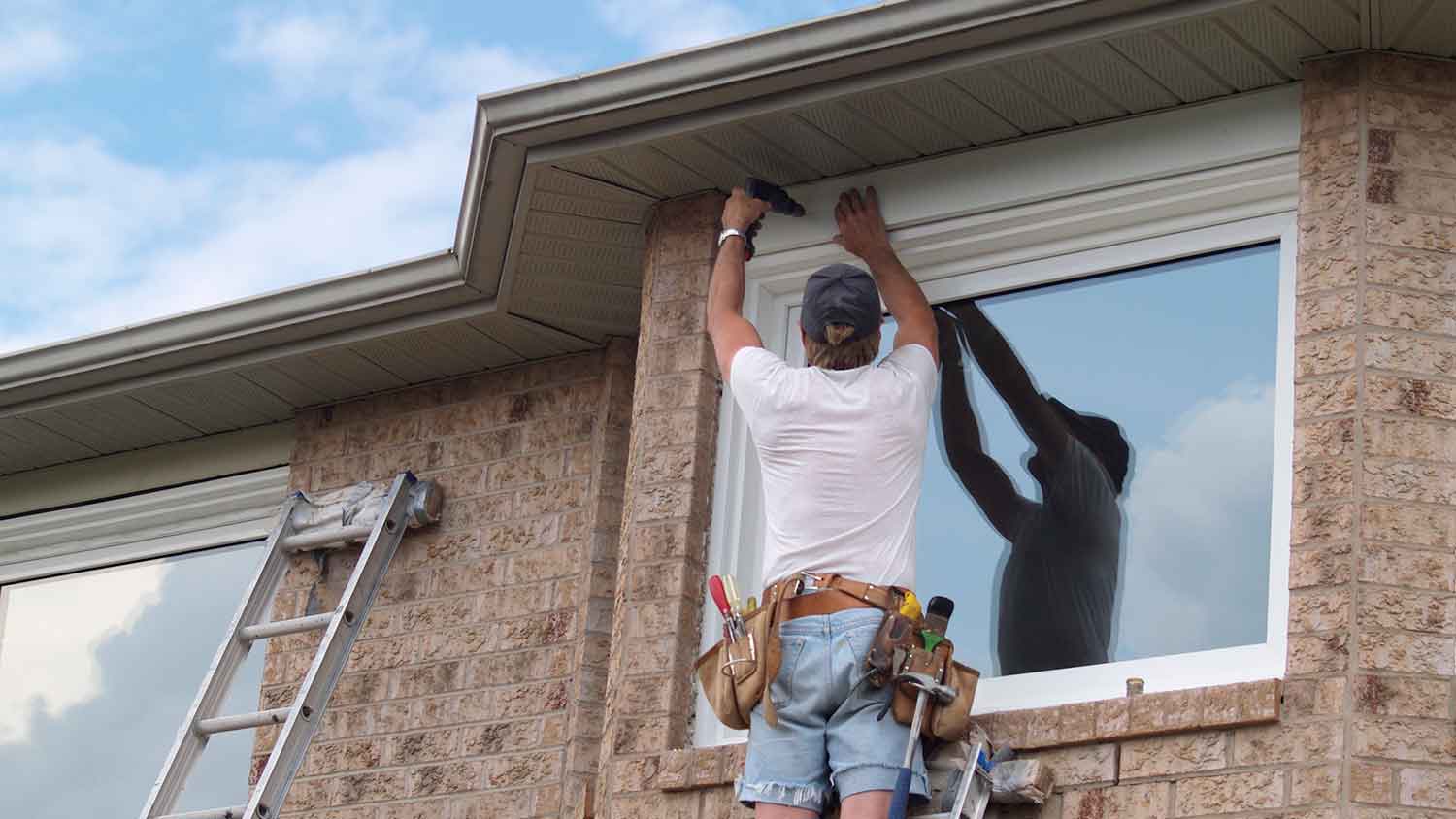
Discover the cost to install window trim. Learn about price factors, labor, materials, and tips to save on your window trim installation project.
The (ceiling's) the limit for this painting project


Want to give a room a whole new look, but feeling intimidated by the height of the ceiling? Plenty of homeowners just skip painting the ceiling when painting a room, but freshly painted ceilings and walls tie everything together and make it feel clean and crisp. Follow these tips for how to paint high ceilings to give your room a thorough refresh.
Before you do anything, think about safety first. Painting the ceiling means climbing up a ladder or, if your walls are high enough (think two stories or more, or more than 20 feet high), using scaffolding or a painting lift.
Get familiar with ladder safety, such as always having a spotter when climbing, ensuring the ladder is positioned on solid, level ground, and maintaining three points of contact with it at all times.
If you're using a lift or scaffold, consider wearing fall protection gear and a safety harness, especially if you'll be working on the second story or higher.
And don't forget the basics of painting safety:
Open the windows or otherwise ventilate the space
Wear safety goggles
Wear a respirator if you're working with oil-based paint
Think about the most efficient way to go about painting your ceiling. Ideally, you'll choose a route that has you move the ladder as infrequently as possible to reduce the number of times you need to go up and down.
Survey the room to determine where you can safely and securely place the ladder, as well as where to position the materials for easy access.
If you want to make your high ceilings seem even higher, paint the ceiling a shade or two lighter than the rest of the walls. However, if your room feels too spacious and you want to make it feel a little cozier, opt for a paint color that is a shade darker than the rest of the walls to create the illusion of a slightly lower ceiling.
For a uniform look, you can paint the ceiling the same color as the walls.
Your arms may get a little sore and tired from reaching over your head. Even Michelangelo took breaks when painting the ceiling of the Sistine Chapel, so don't be afraid to plan plenty of pauses in your project.
You'll automatically get a bit of a break after finishing the first coat, as you'll want to give the paint at least a few hours to dry before you apply the second layer.
Take the time to prepare the surface of your ceiling for the best results and a smooth finish. To avoid too much mess, cover the floors and remove any large pieces of furniture. Clean the ceiling, including the corners, and brush away any dust or cobwebs. If necessary, patch the drywall.
Switch off the electricity and remove any overhead light fixtures. Then, tape around the openings of those fixtures.
When you start painting, be sure to cut in where the ceiling meets the wall to create a neat line. An edging tool will help you get even lines.
The right tools can make painting a high ceiling go a little more smoothly and safely:
Extension pole: Attach an extension pole to your roller to reach the ceiling without strain.
Ladder or scaffolding: Whichever you choose, having a safe, sturdy structure to climb up on will make the project more comfortable.
Edging tool: An edging tool will help you cut in and get sharp, clean lines without drips or stray marks.
Safety gear: Safety goggles, a mask or respirator, a harness, and grips for the ladder's feet will make your project safer and more secure.
Basic painting supplies: Along with special equipment, you'll want to have the painting basics, such as a stirring stick, brush, paint tray, and roller.
Painting a ceiling costs an average of $250, but you can expect to pay a little more for a higher ceiling since the job will require more skill and equipment. Some very high ceilings, such as vaulted ceilings, can cost thousands of dollars to paint.
No one said painting the ceiling, particularly a high ceiling, was easy. If it all seems like too much work to you, hiring a local interior painting pro can be the way to go. A pro painter will have the tools and equipment needed to give your ceiling a refresh (and your arms a break).
From average costs to expert advice, get all the answers you need to get your job done.

Discover the cost to install window trim. Learn about price factors, labor, materials, and tips to save on your window trim installation project.

The cost to paint the interior of a house in Indianapolis, IN depends on size, layout, type of surface, and more. Learn what factors can influence your total in this guide.

The cost to paint the interior of a house in Denver, CO depends on size, layout, type of surface, and more. Learn what factors can influence your total in this guide.

Acrylic, eggshell, and matte—the options for interior paint can be confusing. Follow our guide to learn which type of paint is best for your home’s walls.

No one wants a bathroom with peeling paint and mold buildup. Picking the best paint for bathrooms helps you steer clear of these shower room setbacks.

Paint on metal doesn’t have to be permanent. Learn how to remove paint from metal yourself with various household methods.